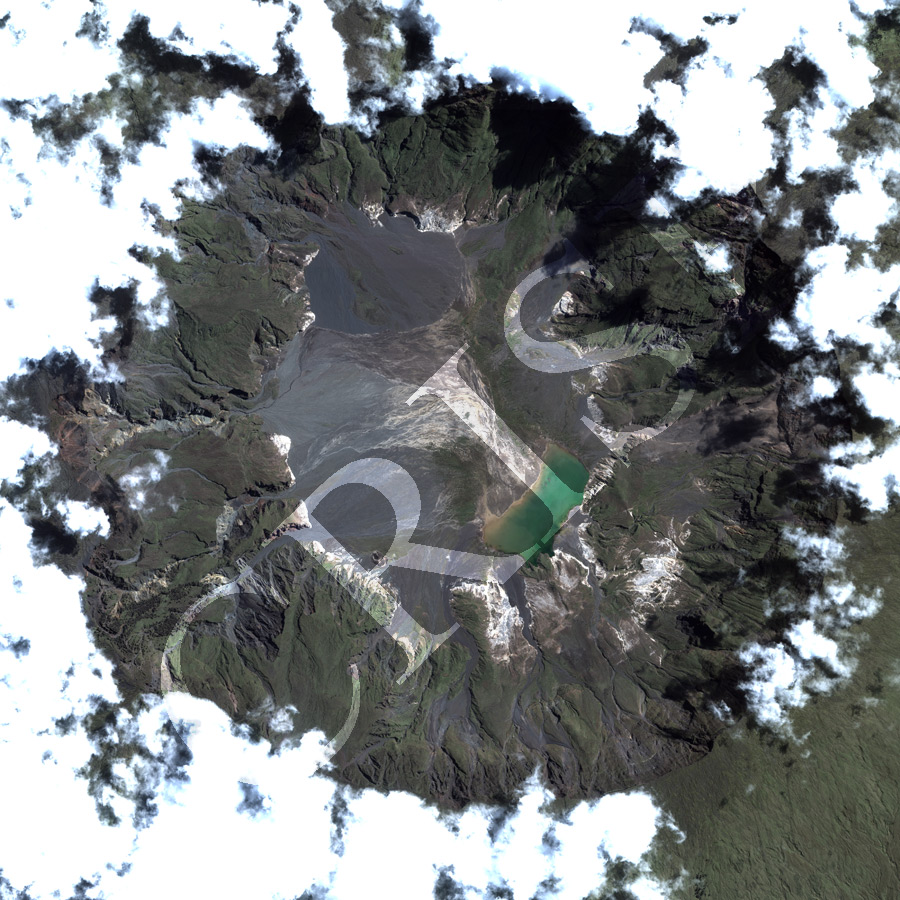Tambora Volcano Through A Collar Of Clouds, Sumbawa, Indonesia
29 April 2010

Note: The area of coverage in this IKONOS image is approximately 8 km x 8 km.
The reduced resolution image on display has undergone compression and so does not represent the true resolution of the original satellite image.
The image shows the effect of the world’s greatest recorded eruption in April 1815 which reduced the height of Tambora’s estimated 4300 m peak to about 2850 m. About 90 000 people were killed, most of them from starvation following the devastation of agricultural land by the huge volume of erupted material on Sumbawa itself and also the neighbouring islands of Bali, Lombok, Flores, and south Sulawesi. Ash from the eruption reached as far as south Sumatra and the island of Bangka. Volcanic aerosols travelled round the globe depriving the world of a warm summer in 1816 when the mean temperature in Europe dropped to about 3°C below the average with spectacular sunsets. The sunsets influenced the paintings of artists including Turner and the bad weather was instrumental in Mary Shelley writing Frankenstein. The result of this huge eruption created the caldera on the image, 6 km across and 600-700 m deep. The present floor of the caldera is masked by deposits from various eruptions and screes of volcanic material falling off the caldera wall. A green rectangular lake has formed towards the east, directly below the rim.
